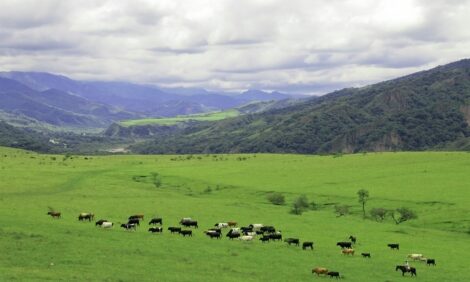



Milk Crisis As Dairies Challenged
INDIA - If milk becomes more expensive, it will not be because India has a shortage. It’s because the large dairies responsible for supply are been kicked out of the market and consumers will be left to pay the price for their exit.Delhi is the perfect example. Uttar Pradesh produces more milk than the world’s largest exporter, New Zealand, while Punjab and Rajasthan each beat Australia, according to TheEconomic Times. North India produces almost half of India’s 108 million tonnes of milk. In the midst of plenty, how can there be a crisis?
Yet Mother Dairy, owned by the venerable, National Dairy Development Board, one of the pioneers of India’s ‘white’ revolution and a big daddy of the industry, doesn’t have enough fresh milk. It buys from dairy cooperatives in Rajasthan, Punjab, Haryana, Uttar Pradesh and even Bihar.
It doesn’t subsidise consumers and can afford to pay farmers well. Even so, 30 per cent of its milk is a re-mix of skimmed milk powder and fat. In summer, that share reaches 50 per cent.
In the West and the South, dairies use it as a last resort to shore up supply in the lean summer months. In Delhi, it is Mother Dairy’s lifeline. If competitors such as Amul (or Gujarat Cooperative Milk Marketing Federation) and private players don’t chip in, Delhi would have milk riots.
The crisis of supply is everywhere. Mumbai needs about five million litres of milk daily. The three aging state-owned dairies supplying it can together handle only one million litres. What gives?
Instead of going to the cooperatives, milk is flowing to private companies. Instead of running away at the sight of these giants, the private sector is ready to fight. Unfortunately, the cooperatives seem to be losing for now. There are two reasons says The Economic Times.
One, it is a question of price. Milk is a premium food with many uses. Dairies compete against each other as well as factories that put it to different use. Farmers don’t care who buys, they sell milk to the highest bidder.
Competition is further compounded by demand outpacing supply.
‘Dairy India 2007’, says the sector is growing a meager three per cent annually. Though some 75 million farmers have dairy cattle, they sell only one out of every two litres in the pail.
This year, the cost of milk has risen further because of drought decimated pastures and expensive fodder, meaning farmers raised their asking price.
There was another complication. The price of meat also doubled in the last year. Farmers that couldn’t feed their buffaloes or didn’t make enough money from the milk sent their animals to the slaughterhouse. This decrease in the national herd also meant less milk produced and a further hike in prices.
While some dairies, such as Amul in Gujarat, buy a third of the local production, North Indian cooperatives get less than five per cent. In Uttar Pradesh, they don’t even buy two per cent. Instead of paying mind-blowing prices, these cooperatives have become customers of the last resort.
Had they been smarter, dairies wouldn't have let prices phase them. Price is important. But in business, relationships are everything. People prefer to deal with people they trust - loyalty and commitment between a company and its suppliers can tide over the toughest times.
Cooperatives by their very definition ought to have had an unbeatable network of loyal member-farmers. Reality is harsher. Instead of direct farm procurement, Mother Dairy, for instance, depends on contractors, state-owned cooperatives and even some private players. These intermediaries hugely inflate the cost of milk at factory gate, making it tougher for Mother Dairy to compete.
Such dependence is also a supply management nightmare. Imagine what would happen if the FCI stopped buying wheat directly from farmers, did not pay more than private traders, and depended wholly on the limited infrastructure of state corporations. A deadly mix of competition from meat and milk powder, feeble farmer relationships and management complacency has crippled dairy cooperatives.
The crisis in milk is actually no different to the fight over sugarcane between gur kolhus and sugar mill owners. As they grew, mills became complacent. They underestimated the ability of gur kolhus to pay and the farmer’s ability to find alternatives.
Farmers took revenge by refusing to plant cane or selling it to gur factories. Today, we have a sugar crisis but ample gur. Rather like the currently abundant casein but shortage of liquid milk.
Given their enormous headstart and a great business model, state-owned dairy giants could have easily engineered India’s second milk revolution and benefited farmers and consumers alike. After all, New Zealand’s Fonterra, the world’s largest dairy company, is a cooperative. Amul is among the world’s top 20 dairy companies.
The milk market shows size and experience are no guarantee of corporate survival. Even the biggest names need the will to fight. Dozens of small fry are now eating the big fish.
TheCattleSite News Desk


